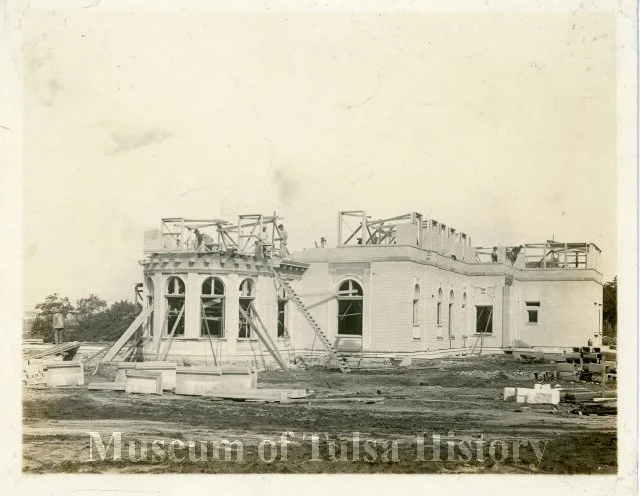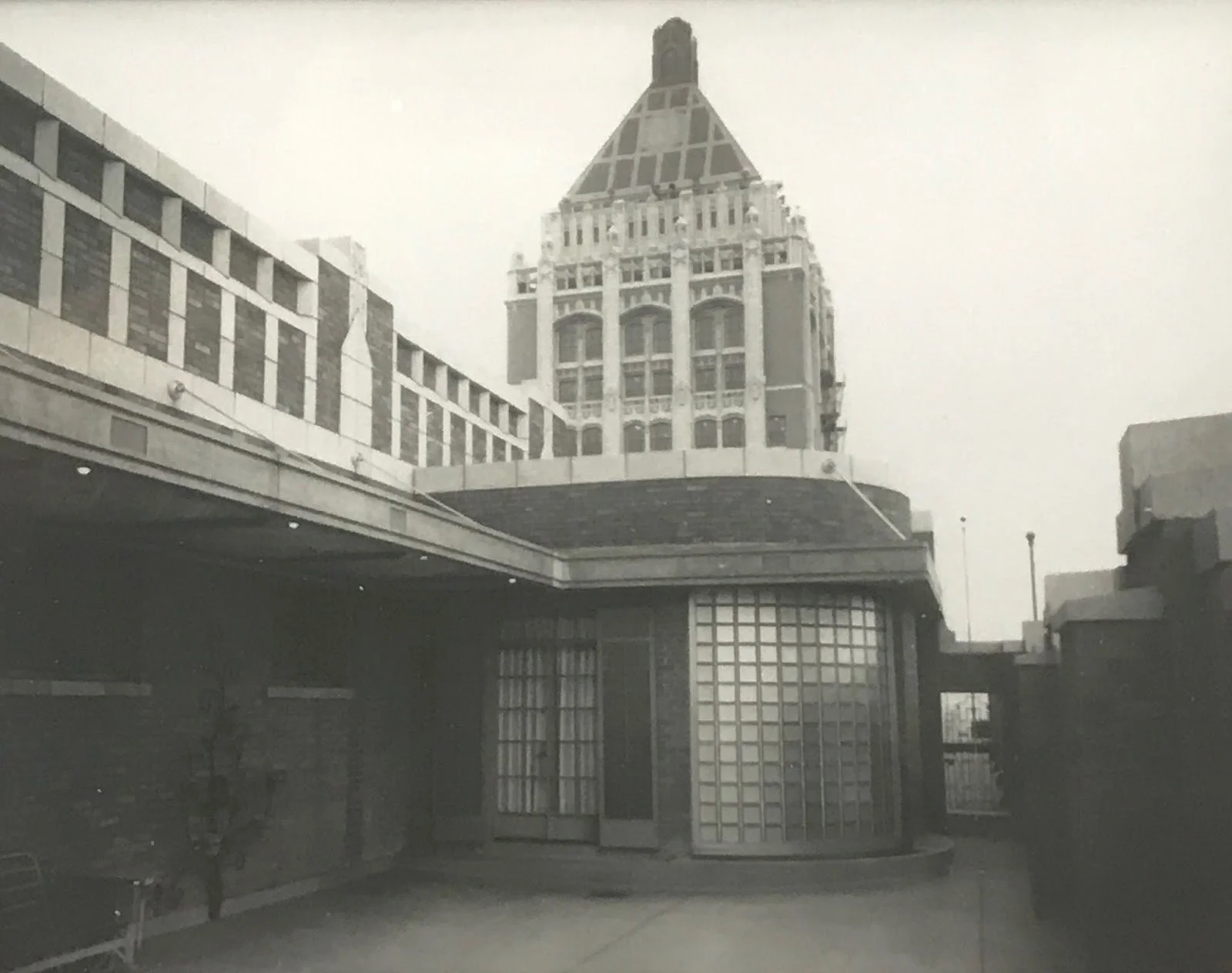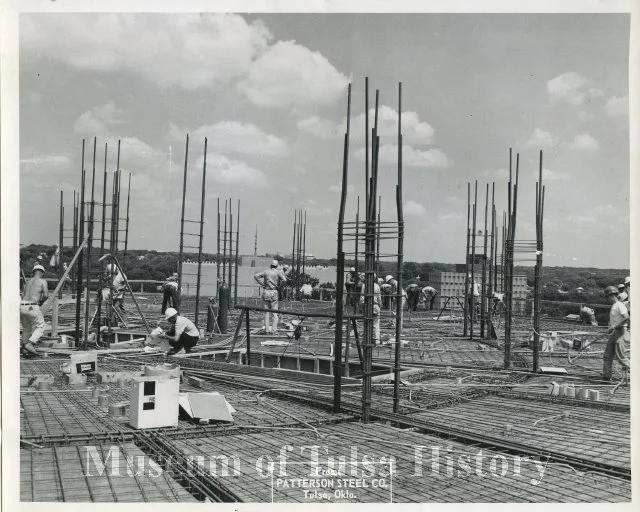Blueprint for a City: How W.R. Grimshaw Helped Shape Tulsa
When you walk the streets of downtown Tulsa, or glance up at the skyline, you may not realize how much of it was built by W. R. Grimshaw. His legacy isn’t just remembered. It’s walked through, lived in, and built upon every day.
William R. Grimshaw, Sr. came to Tulsa in the late 1910s after studying engineering in New York City. He quickly found opportunity in a booming oil town eager for growth. One of his first major projects was the David R. Travis Mansion, completed in 1920 and now known as the Tulsa Garden Center. Its success launched a career that would span more than fifty years.
Historic Construction of the David R. Travis Mansion in Tulsa, 1920 by W.R. Grimshaw
Rare photograph of the David R. Travis Mansion under construction in 1920. Now home to the Tulsa Garden Center, this historic Tulsa landmark showcases early 20th-century classical architecture tied to Tulsa’s oil boom heritage.
In 1925, Grimshaw founded the W. R. Grimshaw Construction Company. Operating from an office in the Philtower Building, the company grew into one of the most respected construction firms in Oklahoma. Over time, it completed hundreds of projects across the Midwest, from public schools and utility infrastructure to commercial towers and civic landmarks.
Grimshaw played a key role in the evolution of the Philcade Building. While the original structure opened in 1931, it was Grimshaw’s firm that built the 10th through 13th floors during phase two of construction. Later, in 1937, his team added a private penthouse residence for oilman Waite Phillips and installed one of Tulsa’s earliest central air-conditioning systems. These contributions demonstrated the company’s technical precision and ability to integrate modern amenities into complex Art Deco designs.
Philtower Building View from Rooftop Terrace – Tulsa, Oklahoma
Rooftop view of the iconic Philtower Building in Tulsa, Oklahoma. Captured in black and white, the image highlights the building's intricate Neo-Gothic Art Deco crown and modern contrast in foreground architecture.
In 1957, Grimshaw’s company completed International Plaza, a 12-story glass office tower designed by Skidmore, Owings & Merrill. At the time, it was considered one of the most modern and innovative buildings in the region. Less than a decade later, Grimshaw served as general contractor for the University Club Tower, the now-iconic cylindrical high-rise along Riverside Drive. It was the first major building in the United States designed using computer-aided techniques and remains a prominent feature of the Tulsa skyline.
Construction of University Club Tower – Tulsa’s Iconic Cylindrical Skyscraper, 1960s
Black and white photo of construction workers building the University Club Tower in Tulsa, Oklahoma, showing steel rebar and early framework on a high-rise platform.
Grimshaw’s company also handled a complex vertical expansion of the Blue Cross Blue Shield headquarters in the 1960s, adding nine additional stories while the building remained occupied. In the public sector, the firm was responsible for major federal contracts including work on Fort Gibson Dam and a motor transport depot at Fort Sill during World War II.
W. R. Grimshaw ran his company as a family business. His wife Bertha and his sons, Bill Jr. and Harry, were deeply involved, along with longtime associates like R. Moody Burch and Charles G. Webb. Together, they created a stable and experienced leadership team that helped the company succeed through economic highs and lows.
Beyond construction, Grimshaw was a respected civic leader. In 1948, he was elected president of the Associated General Contractors of Oklahoma. He was active in the Tulsa Chamber of Commerce and participated in broader conversations about the city’s growth and infrastructure.
Grimshaw passed away in 1979 at the age of 86. The company continued for a time as WRG Construction but eventually closed during the economic downturn of the 1980s. Still, the structures he helped build remain in use, from elegant homes to modern towers and vital infrastructure. His descendants still live in Tulsa, surrounded by the city he helped shape.
Today, the Tulsa Historical Society and Museum preserves the W. R. Grimshaw Company archives, including photos, construction portfolios, and company records. In 2021, an exhibit titled Constructing Tulsa featured his contributions and brought renewed attention to his story.
W. R. Grimshaw was more than a builder. He was a quiet force behind the growth of a city. His legacy lives on in the brick, concrete, and steel of Tulsa’s landscape and in the stories still being told about the people who built it.




